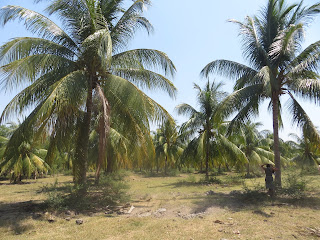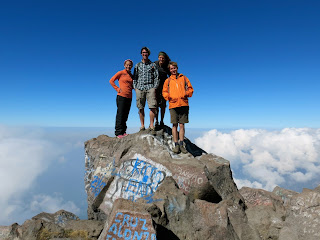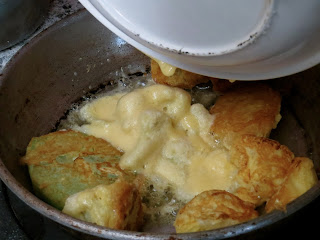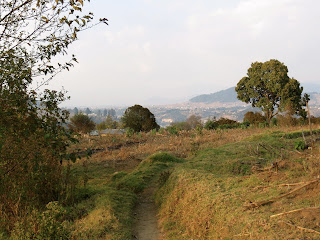I want to share more about what we have been learning lately. These past eight weeks I have slept in 13 different beds, spent time varying from a weekend to a month with four different host familes, lived in two countries, visited numerous towns, cities, churches, and masses, climbed 2 volcanoes, learned to surf, taken a Spanish class and a Liberation Theology class, had countless mind boggling and stretching discussions with the 15 other students in my program, and met so many people that have impacted me in a way I can't wrap my mind around. It has been such an intense experience because it has combined so many fun and exciting adventures with so many testimonies and so much new historical knowledge that is so heavy and so difficult to know.
I haven't shared as much about this more serious side as I would like to for a couple reasons. First of all, its been nearly impossible to find the time to write it all down. But I also just want to be able to share it in a way that is meaningful and helpful. So many times I feel like the passing on of such histories non-firsthand just results in people "feeling so bad" for suffering. I don't want to try and recount someone's trauma or suffering just to tug on emotions. This kind of grief isn't to be used as a personal catharsis or to make you feel so thankful you live in a "free country". I want to challenge anyone who reads this to do as our program has done- force us to look at WHY these people have suffered so and to realize that the darkness within political and social structure is not a part of the past, but it is something that continues as we speak.
To elaborate on this, I will tell you about the life of Rogelio, a man who told us his story this past weekend. When he was nine years old he was one of the only people to survive a massacre of 160 people in his town. His community organized and went to the city to have a demonstration demanding the government to address the poverty, lack of resources, and injustices their community was facing in 1983. Several weeks later the community was in the woods hiding from the army that marched to their pueblo to kill them. The army found their hiding spot and killed many right there. Rogelio described hiding behind a tree and watching grenades and guns blow arms, legs, and heads all around him. The survivors were eventually gathered and marched for days in abhorrently cruel ways. They teased them with bread they couldn't eat, made them march barefoot through the hottest parts of the day, and eventually raped and killed many of the young girls while their parents were forced to keep walking. They stuffed them all (I believe there were about 50 alive at this point) in a house and made them be silent. Mothers with crying babies had no milk, and Rogelio said many ended up suffocating their own babies when they were forced to put cloth in their mouths to stop the crying.
At the end of their journey, there were three planes waiting for the order to kill them after this senselessly cruel journey. They divided them into three groups. Rogelio was in the third. This first two groups were killed. He managed to find an aunt and his sister in this group and proceeded to see them both shot as bullets rained everywhere. During the commotion, he managed to dive into some grass and avoid the guns, though his leg was wounded. While the soldiers from the El Salvadoran army, (trained to kill "insurgents" by the United States) celebrated annihilating 160 Salvadoran men, women, and children, Rogelio spent the next day hiding and trying to keep another boy alive whose leg had been broken and wounded. The boy died. Rogelio walked past bodies and body pieces of his community, trying to find help. He managed to find an uncle. He has survived to share the tale and help rebuild life in this pueblo. He now has a family and a beautiful daughter.
I was thinking back on Rogelio's story and many others that we have heard over the last eight weeks. I thought also about three books in particular that have had a great impact on me sometime during my life: A Thousand Splendid Suns by Khaled Hosseini, Night by Eli Wiesel, and A long way gone by Ishmael Beah. These books, in different ways, share stories of deep, deep human suffering inflicted on people by other people. I realized that each of the kinds of suffering I read about in these books have been represented in firsthand accounts from Guatemala and El Salvador: rape, murder, torture, starvation, death marches, and betrayal. People kill their own people every day, everywhere.
 |
| The names of the men, women, and children killed in the massacre. |
As Americans, we have all these campaigns to stop using children as soldiers, to end genocide, to feed the hungry, and to help the poor. We all support human rights, right? But have you heard the latest statistic on the number of civilian casualties in Iraq during our war there? Do you know how many Pakistani civilians US drones have killed in the last year? Are you aware that Starbucks buys a pound of coffee beans for a little over $1? (yep, you paid $10-12 for it.) Did you know that the School of the Americas continues to train armies from all over the world in the most efficient ways to kill people? (I'm sure El Salvador was the only time these armies used the techniques to kill women and children, right?) Did you know that 50,000 people have been killed in the last ten years along the US/Mexico border in relation to drug violence? Do you know that its nearly impossible to find corn or soybeans that haven't been genetically altered? If you don't think that is a problem, do you know that gluten allergies are becoming so common not because people are necessarily allergic to the gluten, but because they are allergic to how it is modified? Did you know that there are more people in slavery today that at any point in history?
I'm not being condescending or patronizing if you don't know these things; most people don't. But we HAVE to know. Choose not to bother because you can't change anything anyway? True. You can't change these things all by yourself. But widespread awareness and commitment to not support these egregious injustices are the ONLY things that will make tomorrow less violent and oppressive than today. I am choosing to live my life in a way that does not exploit others. I can't help the suffering that Rogelio was forced to endure. I can't give him or his family anything to directly help alleviate the poverty they face. I do dream of a career that will in some way fight oppression. But even aside from that, my decision to be an ethical consumer and an informed United States citizen is how I choose to respect the testimonies I have experienced this spring.
This is a process, it is nearly impossible to live outside this system. But I can start by making sure my coffee purchases support the men and women who produced it. Then I can support politicians who support human rights. Then I can buy my clothes from responsible manufacturers. Someday, I can have my own garden so I don't eat all those pesticides or contribute to the 4 energy calories on average used to transport me 1 calorie of food. We are each very responsible for our own choices. Thinking it won't make a difference is not an acceptable excuse. It's like leaving a kid drowning in a pool because so many other kids will die today anyway. Just because you can't see the man or woman suffering from not being paid for the crops he or she picked for you doesn't make it less real. Your indirect participation helps perpetuate these systems of oppression.
































































